Display Advertising for Lead Generation: One Approach
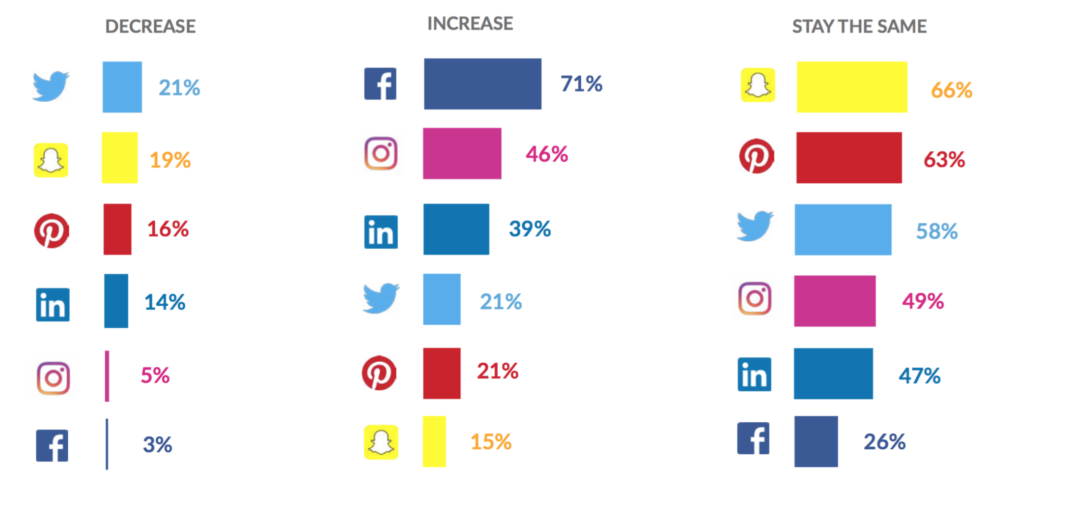
“We’ve tried Display before and it cost a lot of money and didn’t work.” Have you ever heard this from your client when pitching Display? When I hear this, I get bubbly all-over with excitement before extrapolating on the advanced targeting features Google offers for advertising on the Display Network. We know that Google has to up its audience targeting game to stay relevant in a world where social spend is continuing to grow. Hanapin’s own State of Paid Social forecasts that in 2018, advertisers are planning to make significant increases to their budgets in Facebook, Instagram and LinkedIN:

Display advertising can be an effective first touch and a way to increase brand awareness, grow top of funnel conversions, and lead to sales down the line.
Display Advertising Tactics: The layered targeting approach
My greatest success from the Display Network has involved this exact layered audience compilation:
Custom Affinity + In-Market + Contextual Keywords
If you’ve never tested custom affinity audiences in Google, they are a cut above affinity audiences. You create them under the Display Network tab in Google under Interests and Remarketing:
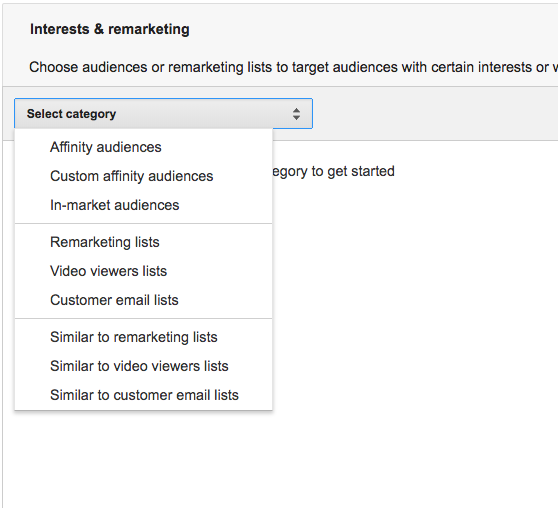
They work by combining URLs your target audience is likely to visit with interests. Let’s say for example, you’re a banana merchant, your custom audience could look like this:
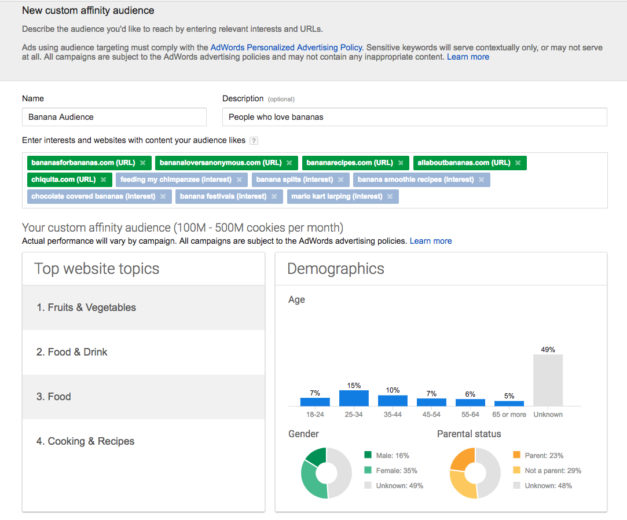
You must enter at least 5 URLs plus free-form interests to create a custom affinity audience. To be clear, the URLs you enter are not where your ad will appear. Rather, it’s greasing the skids of Google’s algorithm to help it better understand your target audience and to inform where ads should appear.
In-Market Audiences
Google lists 508 In-Market audiences. These are pre-defined lists Google has created of users who have shown signals of intent to purchase or convert within a particular vertical. They are by definition, lower in the funnel.
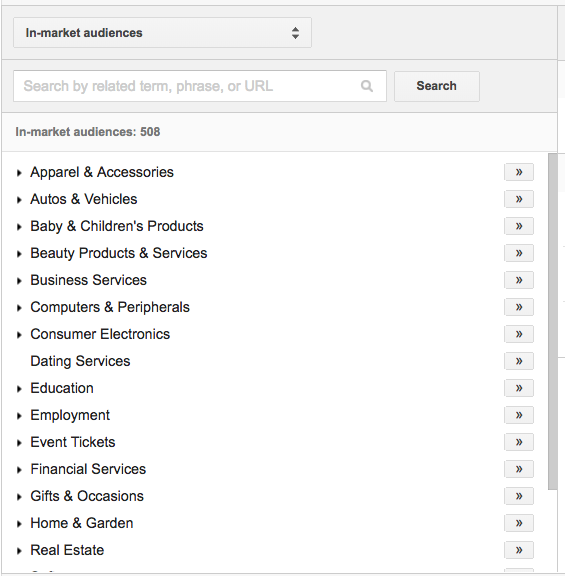
Given the vast number of audiences, your vertical is likely to be represented. Each of these Categories has sub-lists as well to explore.
Keywords
This one is a no-brainer, always layer in relevant contextual keywords to further refine your Display targeting. This method uses keywords to match your ads to relevant sites.
Results:
I tested this layered targeting approach for a larger-spend lead-gen client. Here were the YoY Q4 Results:

The results were astounding, while we did more than double the spend, we got more than 3X the leads for nearly half the CPL.
In addition, we saw branded traffic and lead volume rise after launching these display campaigns showing the impact Display can have on brand awareness. We also saw an increase in direct to site traffic. When selling the value of Display, it’s really important to emphasize how display can positively affect other channels.
Tips To Make This Method Work For Your Lead Gen Display Campaigns:
- Do your research for Custom Affinity: really dig into the target audience and find out the resources they use online, common urls they may have to use for work, or anything that can get you closer to where you might be able to find them on the Display Network.
- Get Creative: try many different types of custom affinity audiences. Test different URL and Interest combinations. The possibilities here are truly endless.
- Always set relevant Placement Exclusions and site category exclusions.
- Set Frequency Caps so as not to bombard your audience
- Use Responsive Ads and make sure they have a relevant CTA Button:
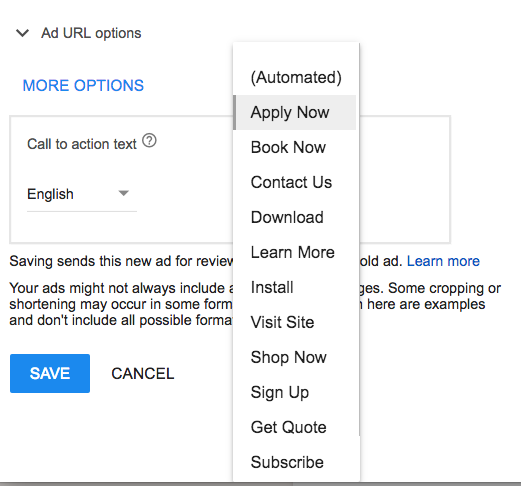
There are a few other Display Network Targeting features to appreciate:
Smart Display – For the uninitiated Display advertiser, this is a highly-automated method using machine learning to automatically set bids, targeting and creatives. Learn more about it from the Guide To Adwords Smart Display Campaigns.
Life Event Targeting – For Gmail and Video ads: you can target audiences based their College, Marital, and Moving status. For More about this, see Life Event Targeting Now Available To All Adwords Advertisers blog post.
Closing Thoughts
Google will have to develop new ways to compete with the audience targeting available on Social Channels and my suspicion is that they will continue to deliver tools to marketers that will help refine audience targeting on the Display Network. While the Display Network can feel like the wild wild west for some advertisers, there are tactics to create hyper relevant messaging directed to audiences that are more refined than traditional display targeting methods.



